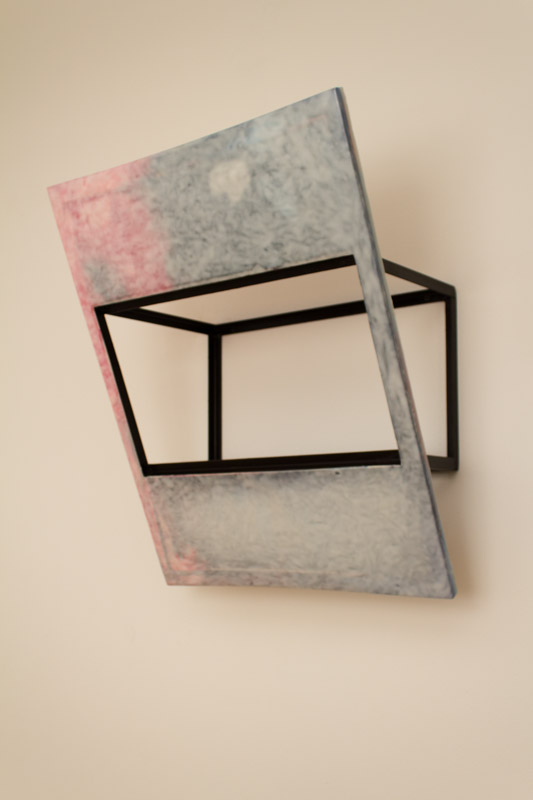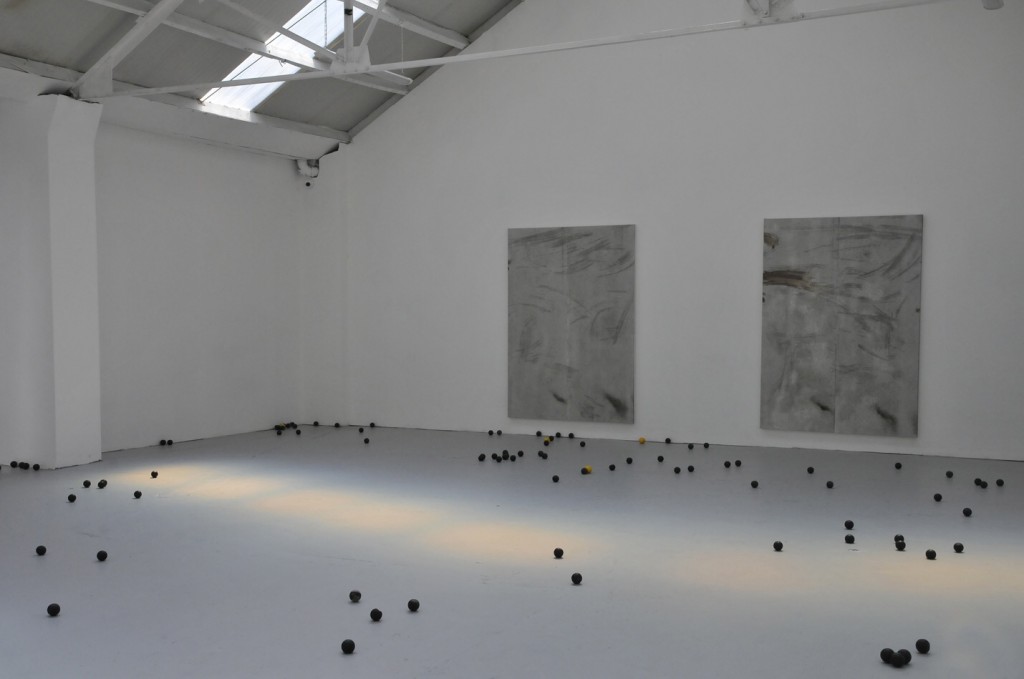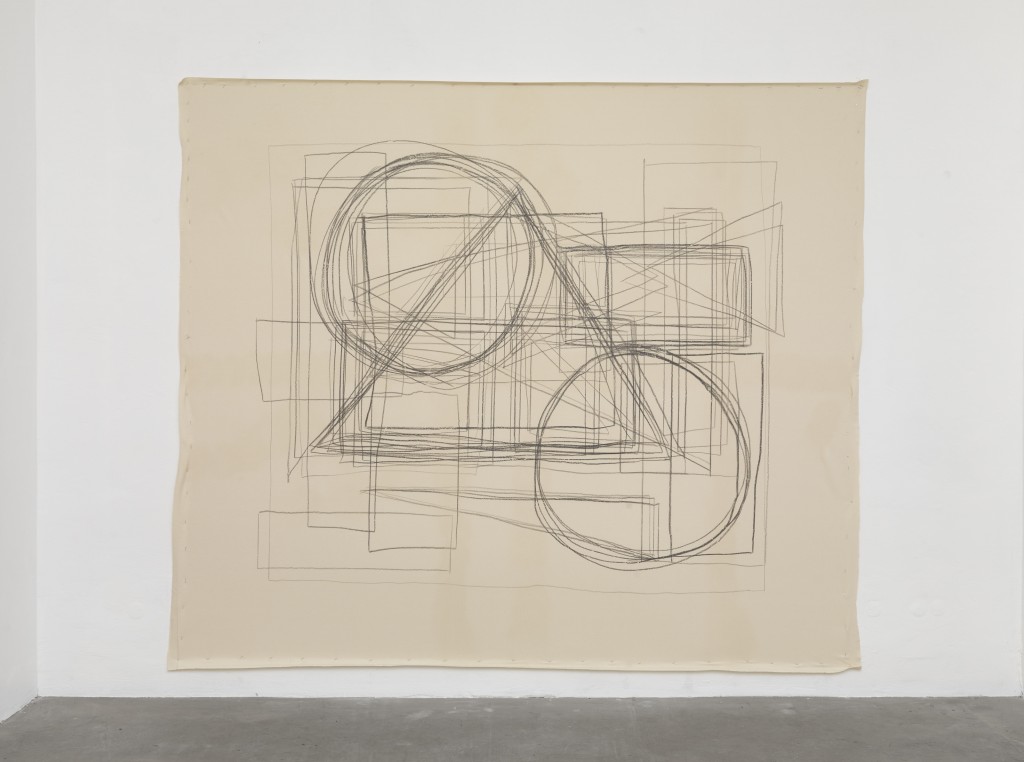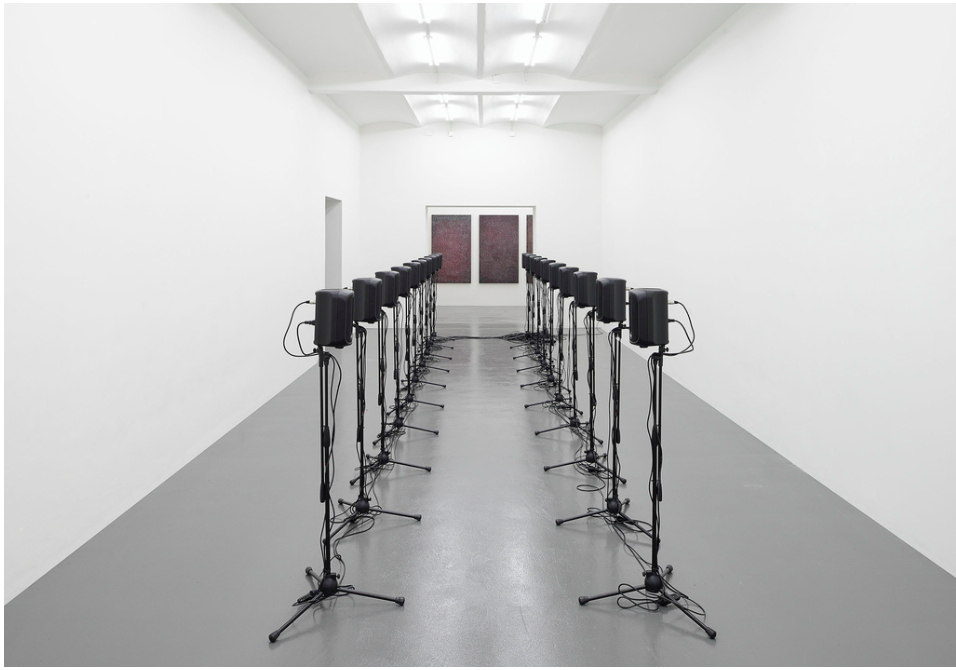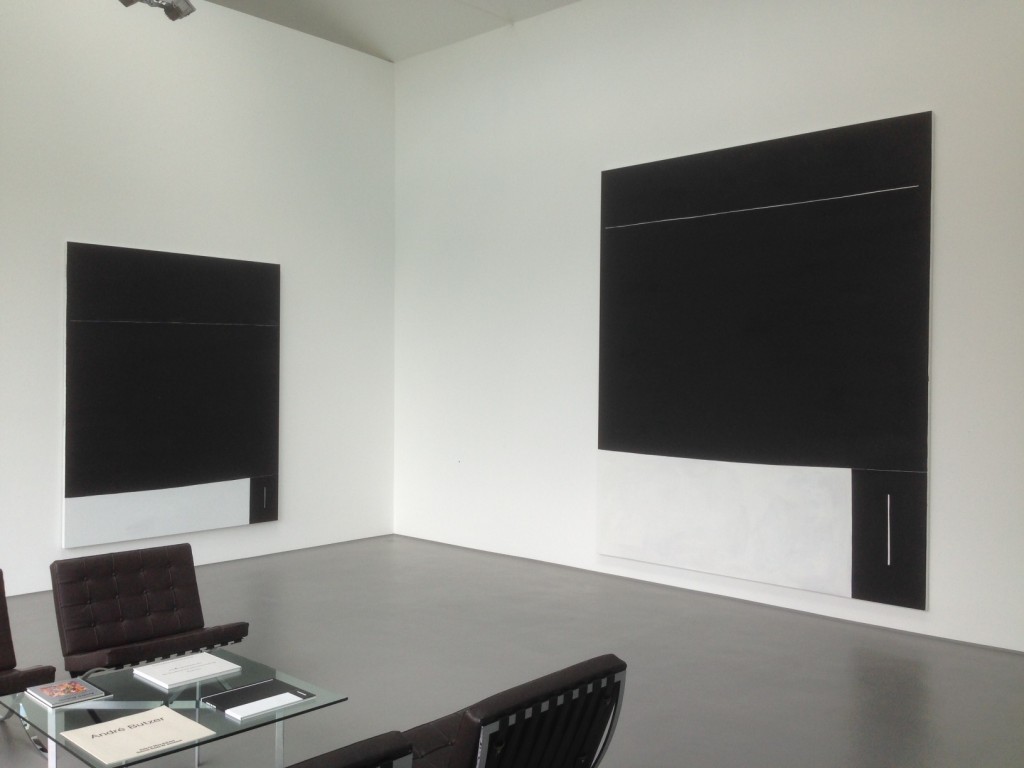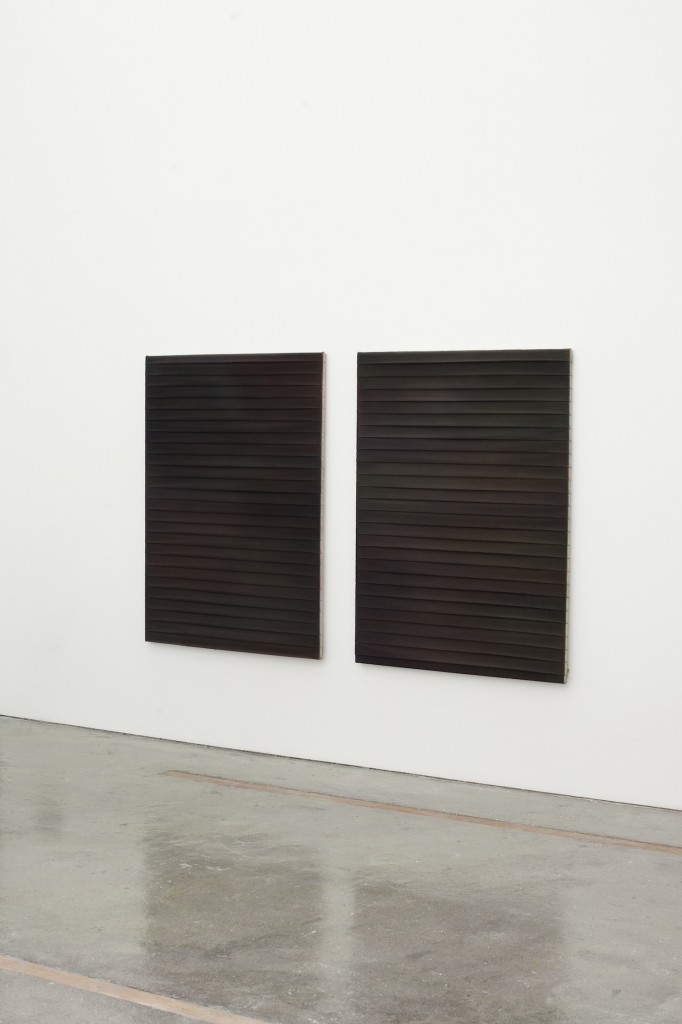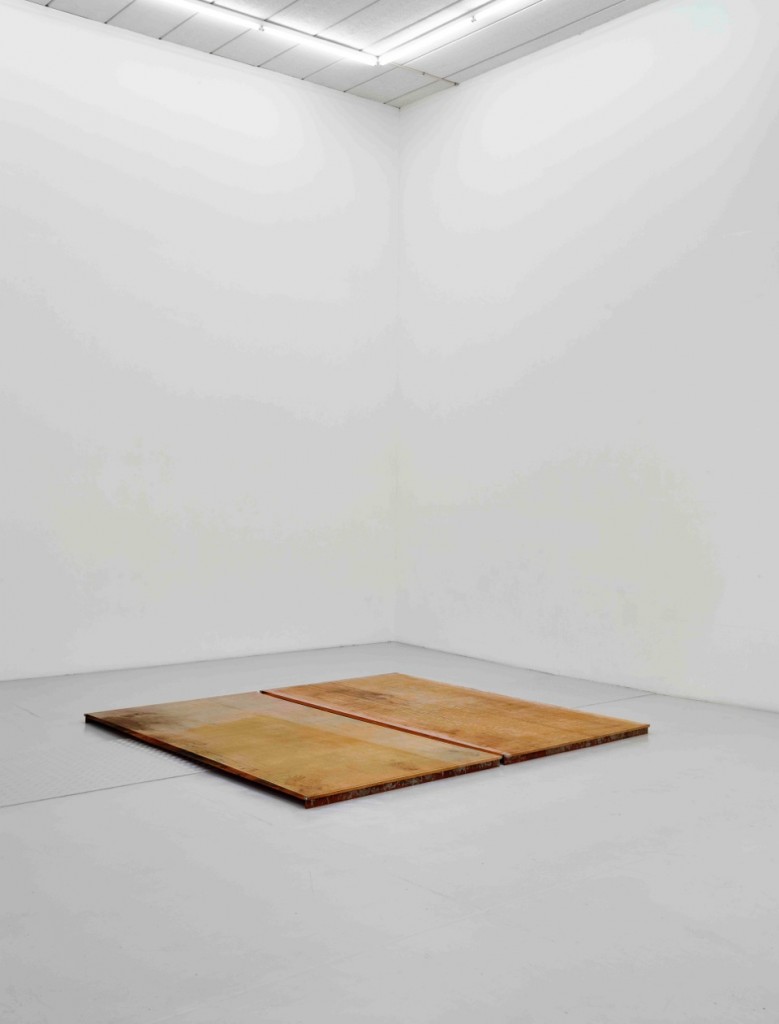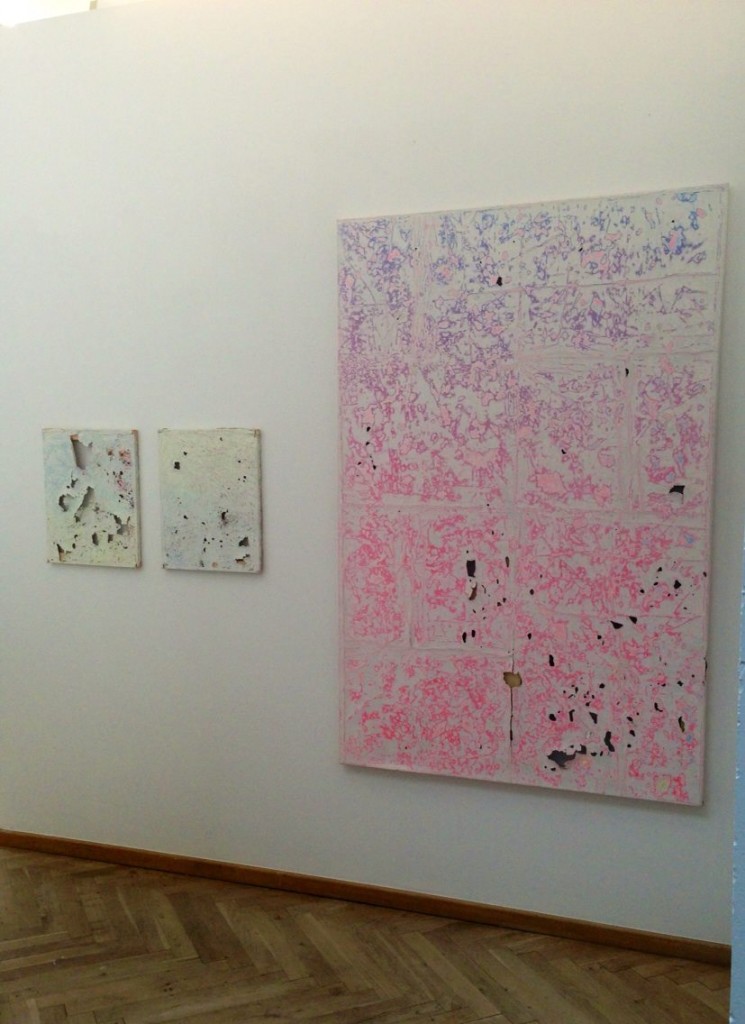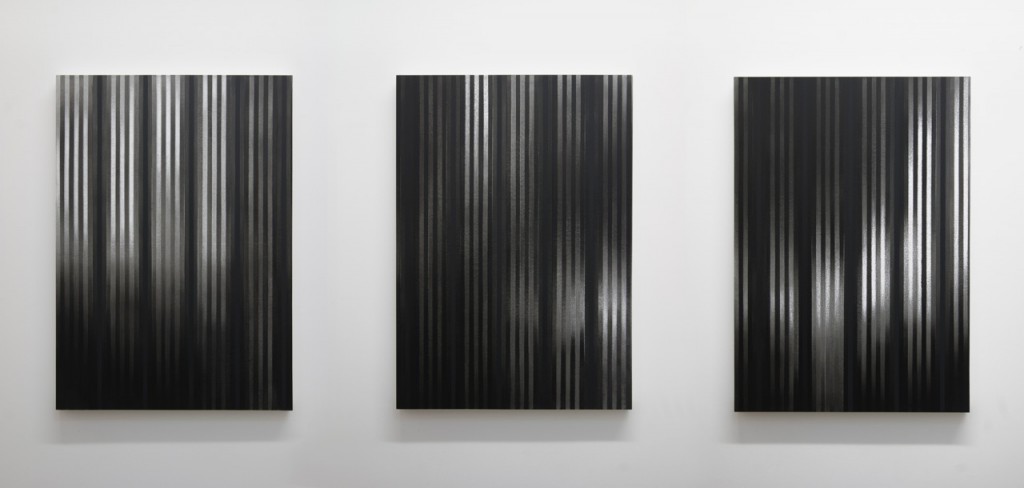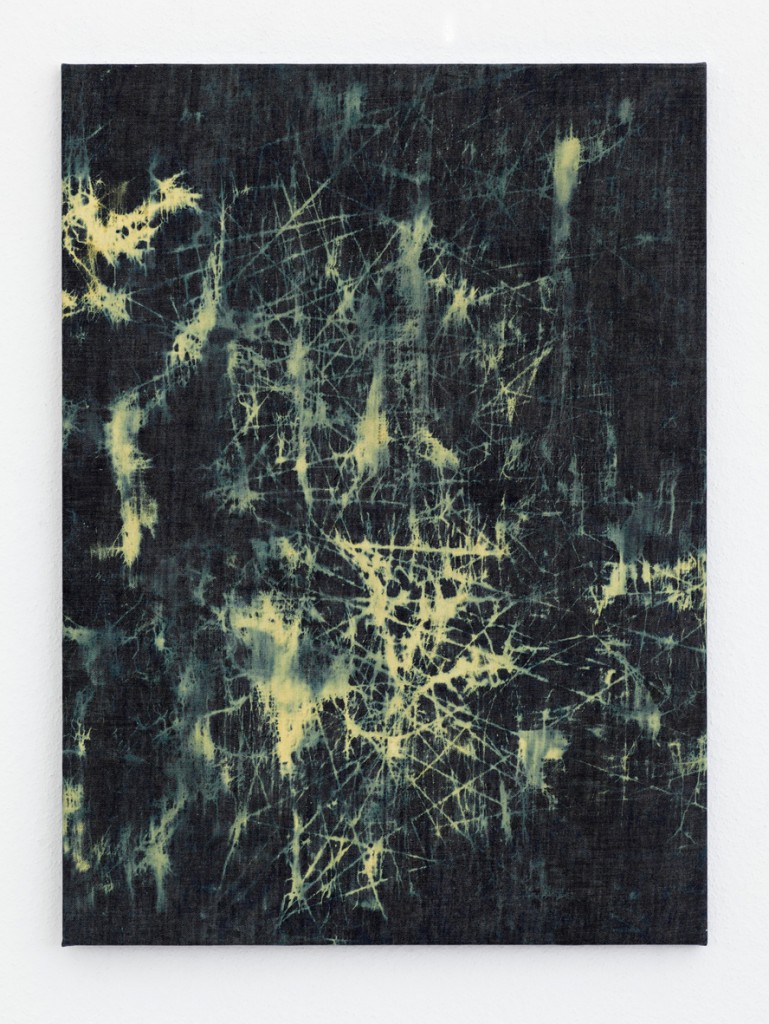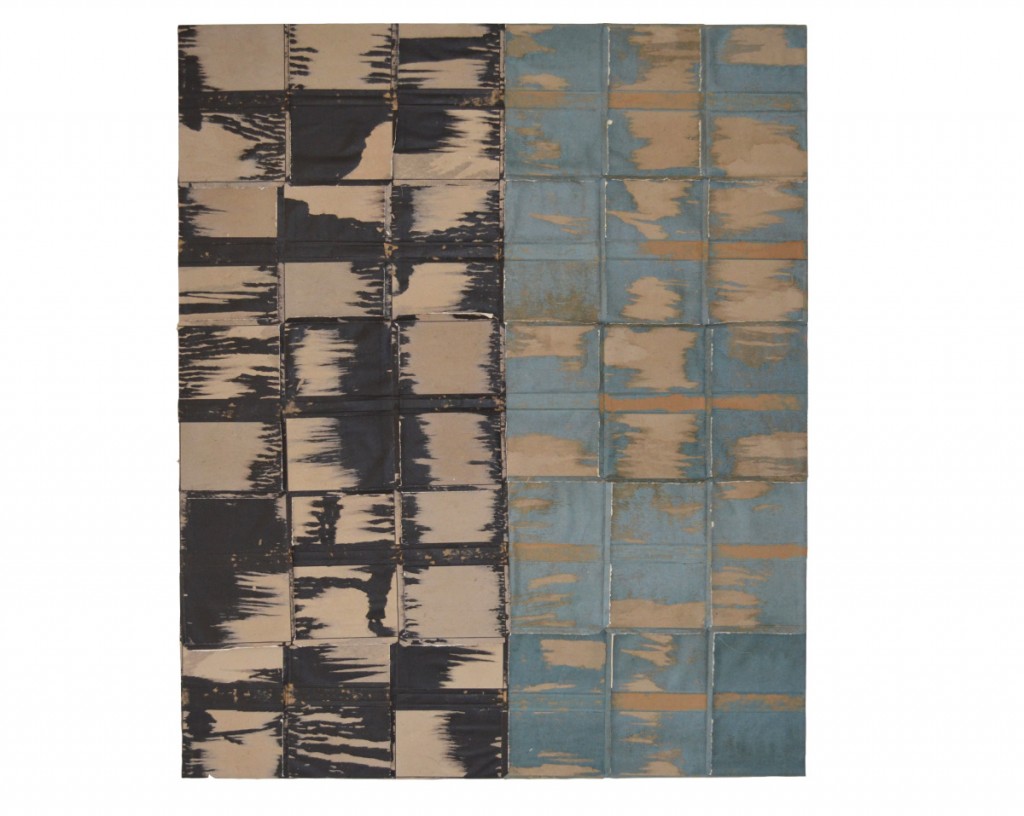What a great year Contemporary Art – 2014 has been. An amazing year full of new discoveries and exciting works. Thanks to all the amazing and talented artists for the very personal answers to the Q&A´s. Please enjoy the re-run of the Artists featured in 2014.
January 2014
Ayan Farah – Pure process and visually amazing works !
Farah´s work is often not painted at all, instead undergoing an elaborate process of digging down, dying and sun bleaching. Farah obtains the physical and tactile records of natural phenomena as a part of her artistic practice. The artist travels to carefully selected locations scattered in the North European countries and bring the imprints of long-lasting nature processes into existence of her site-specific masterpieces. Anja Schwörer
Anja Schwörer
Has in many ways been an inspiration and source of reference for many of the “younger” artist today. Anja´s process is quite interesting, and visually her works are just above amazing.
Utilizing bleach as her medium, similar to how light is used in a photographic process, the images are burned into the canvas while allowing the bleach to yield fluctuations of color, shifting spatial tensions and variant values of positive and negative space. 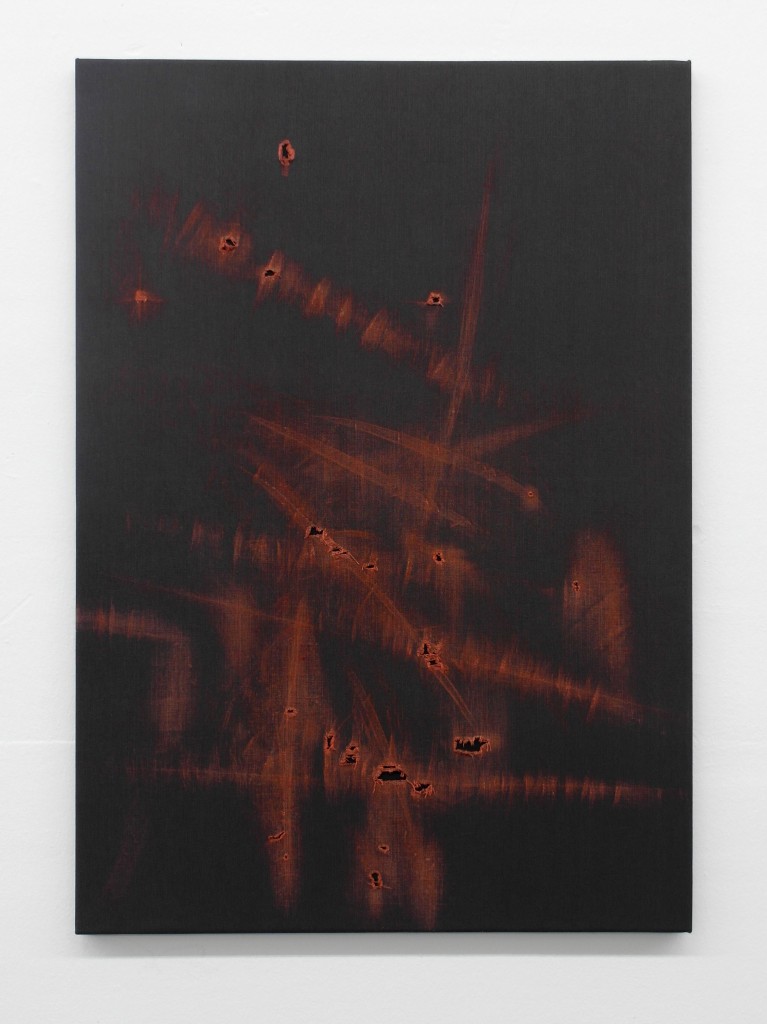 Feb – 2014 Sergej Jensen
Feb – 2014 Sergej Jensen
A Solo show by the Danish artist Sergej Jensen is opening on February 28 – 2014.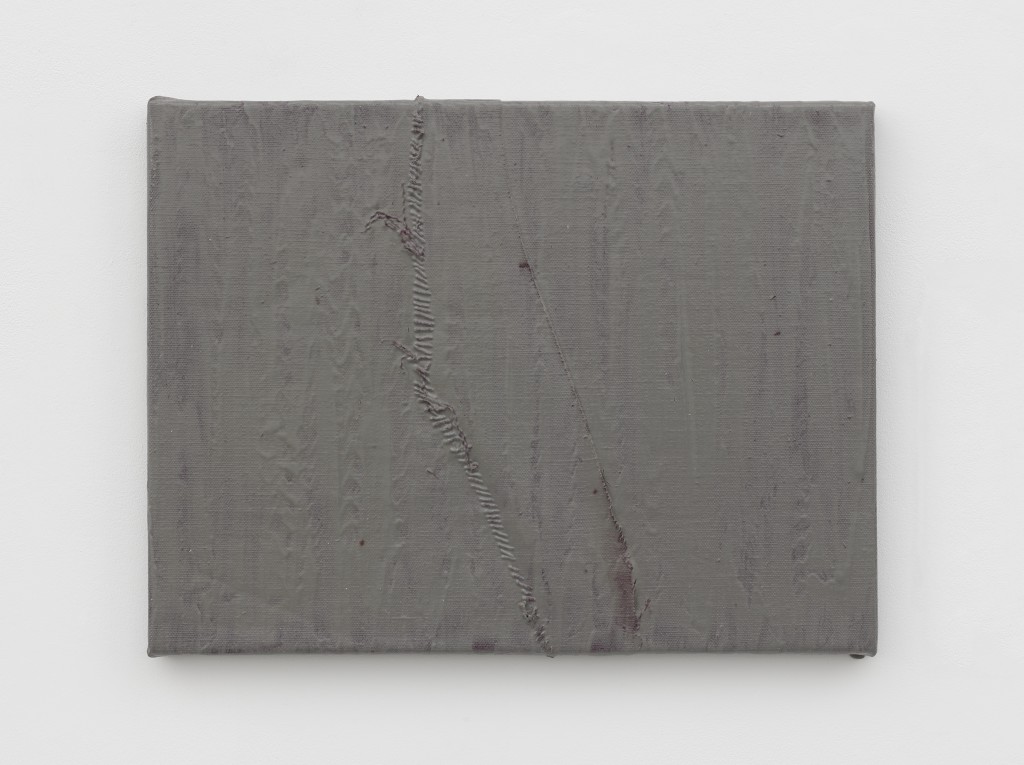 March 2014 – Ryan Estep
March 2014 – Ryan Estep
Ryan Estep / Updated / Process
Different Types of paintings : lidocaine, Re-stretching, Cast Paintings, Clean Paintings, Sterilized Dirt, Sand.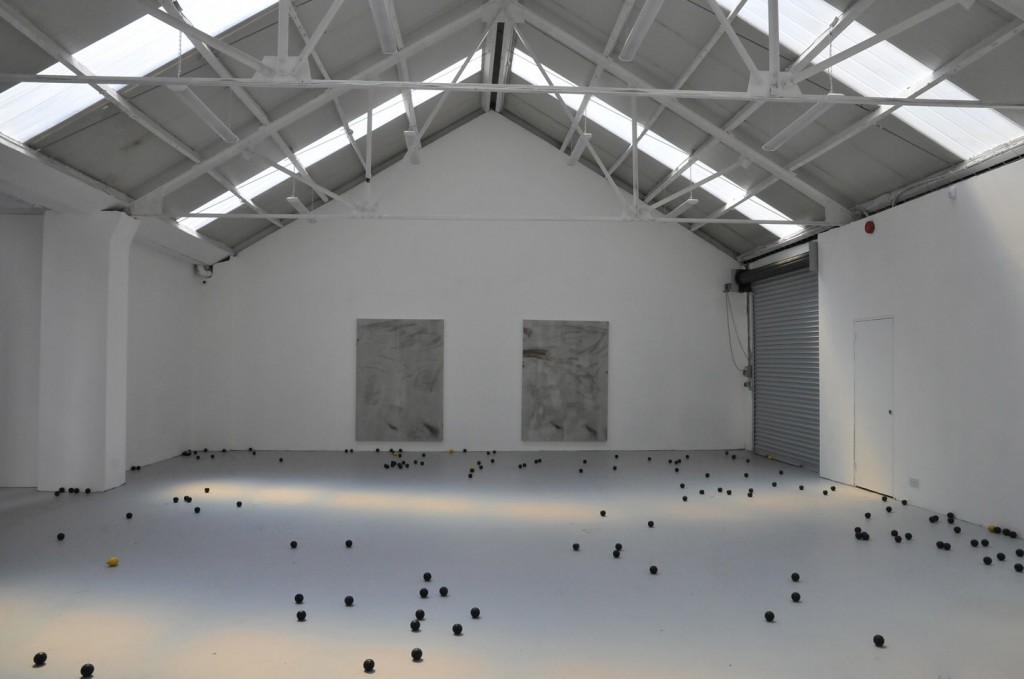 Landon Metz
Landon Metz
While continuing the artist’s ongoing experiments with colored dyes poured onto unprimed canvas, this latest suite of paintings distinguishes itself from preceding series largely through its methodology: where Metz has to this point built up each body of work a canvas at a time, this most recent offering finds him for the first time thinking in terms of seriality, with sets of identically composed canvases mounted in self-contained groupings.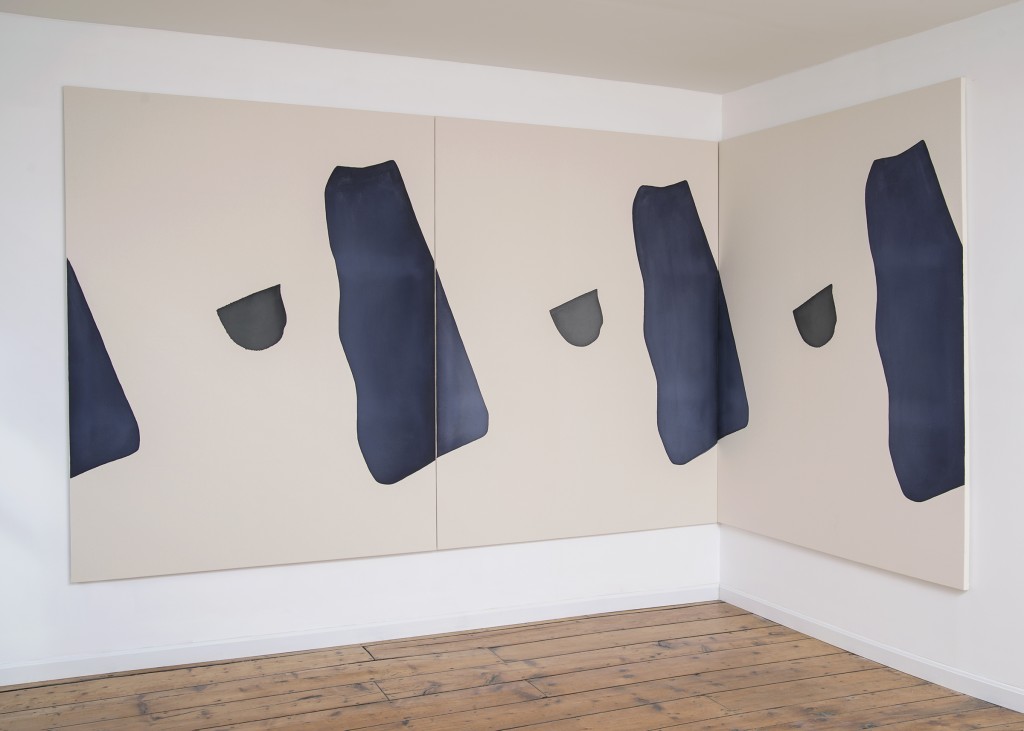
March 2014
I am strongly influenced by the subculture of the 90s in former GDR, shaped by all its sociopolitical upheavals. I played in punk bands and witnesses the rising of grunge. The roughness of that music, also noticeable in fashion and lifestyle, has actually been an expression of sensible perception besides the mainstream culture. The symbols and codes from that period are taken over by the mainstream nowadays and I am highly interested in arranging them in different contexts. Furthermore I’m driven by the music itself, including rhythm and character of the songs in my paintings.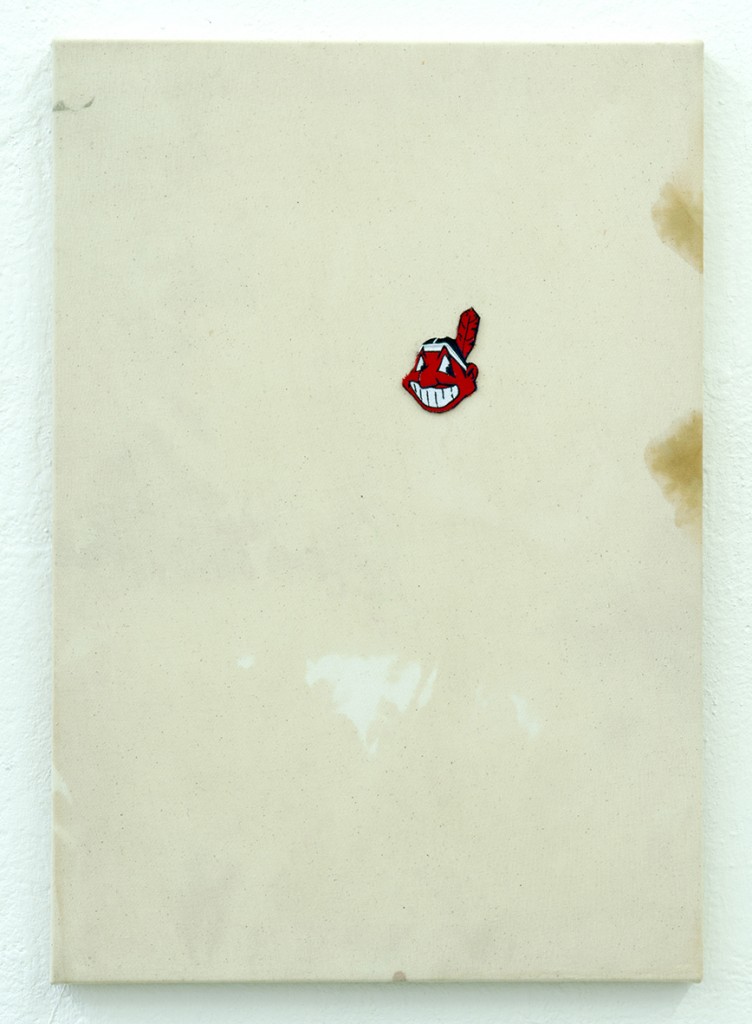 April 2014 – Q&A with Grear Patterson
April 2014 – Q&A with Grear Patterson
Can you tell me a little bit about your background?
7 years old went to camp. – 9 got my first camera. – 11 left home alone for three weeks. – 14 lost virginity. – 15 got drunk. – 17 moved back to New York. – 19 pilots license. – 20 met the love of my life. – 24 bought a beach house.
April 2014 Andre Butzer
The N-paintings seem to lack “color” but the often thinly painted black and white forms are not monochromes. André Butzer is a colorist, “I will always be a colourist and nothing else” and the color choice of black and white is the result of the inclusion, or acceptance, of all existing hues; the destination, or starting point, of color potential.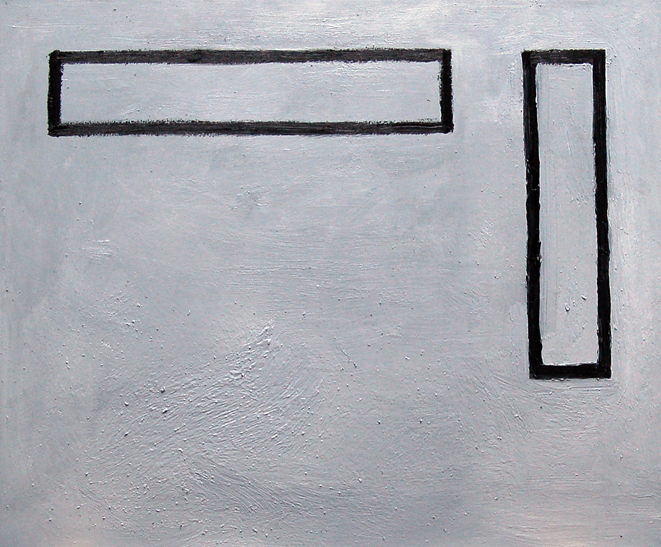
April 2014 – Jennifer Guidi 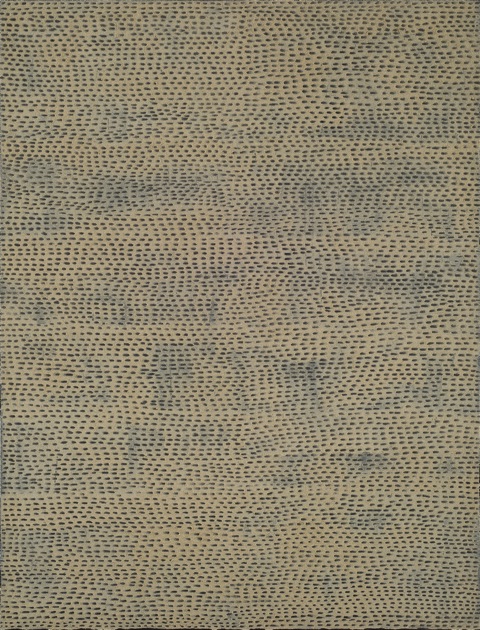
The artwork of Luca Vitone (1964), began in the second half of the 80s. It focuses on the idea of the place, inviting us to re-cognize something we already know, defying the con- ventions of mutable, faded memory that characterize the present.
His work explores the way places are identified through cultural production: art, cartography, music, cuisine, political associations, ethnic minorities. Vitone bridges the gap between the sense of loss of place characteristic of the postmodern and the ways in which feelings of belonging arise in the intersection of personal and collective memory.
April 2014 – Mikkel Carl
What is the idea/concept behind your art?
To use the description offered by curator and art critic Toke Lykkeberg, who recently wrote a text on these new paintings, I guess I’m …”a rather conceptual artist taking some time off as a painter.”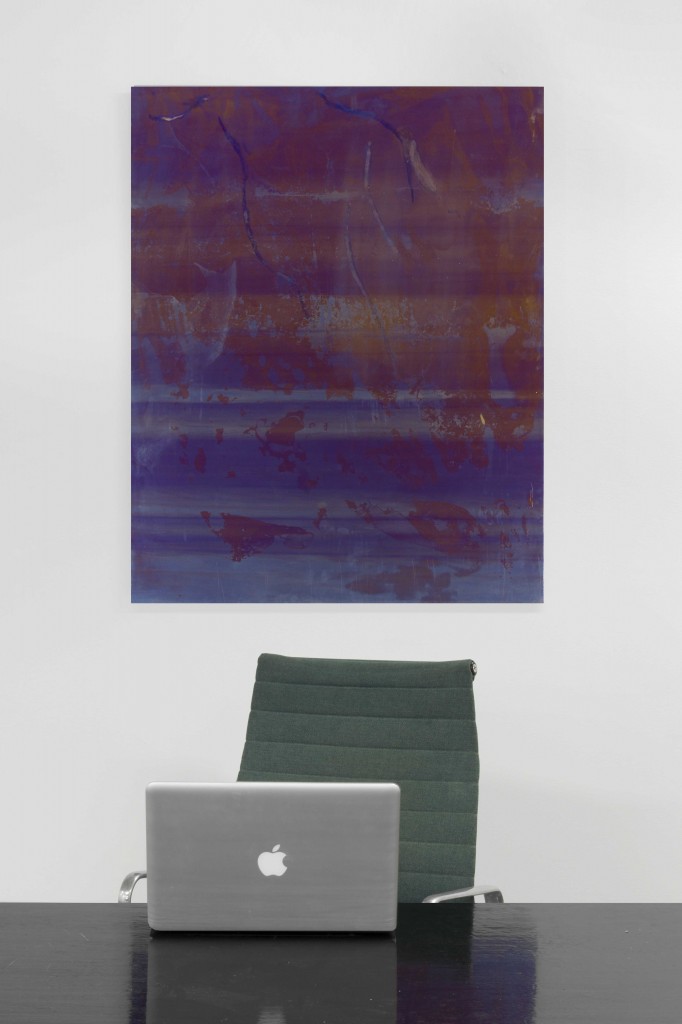 Asger Dybvad Larsen
Asger Dybvad Larsen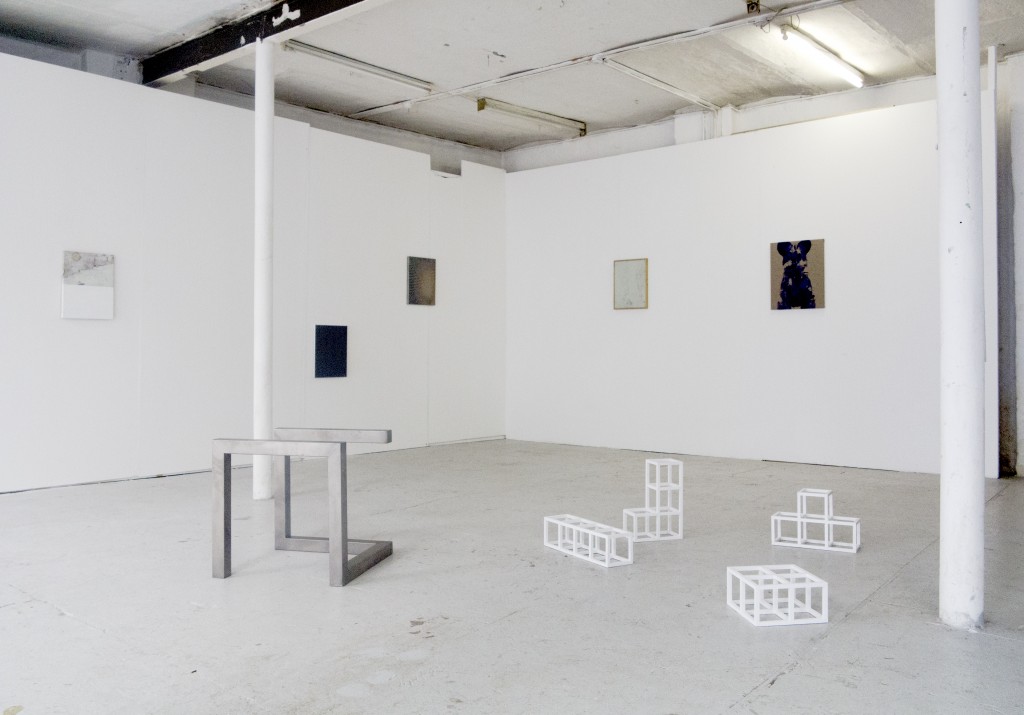 Eli Ping
Eli Ping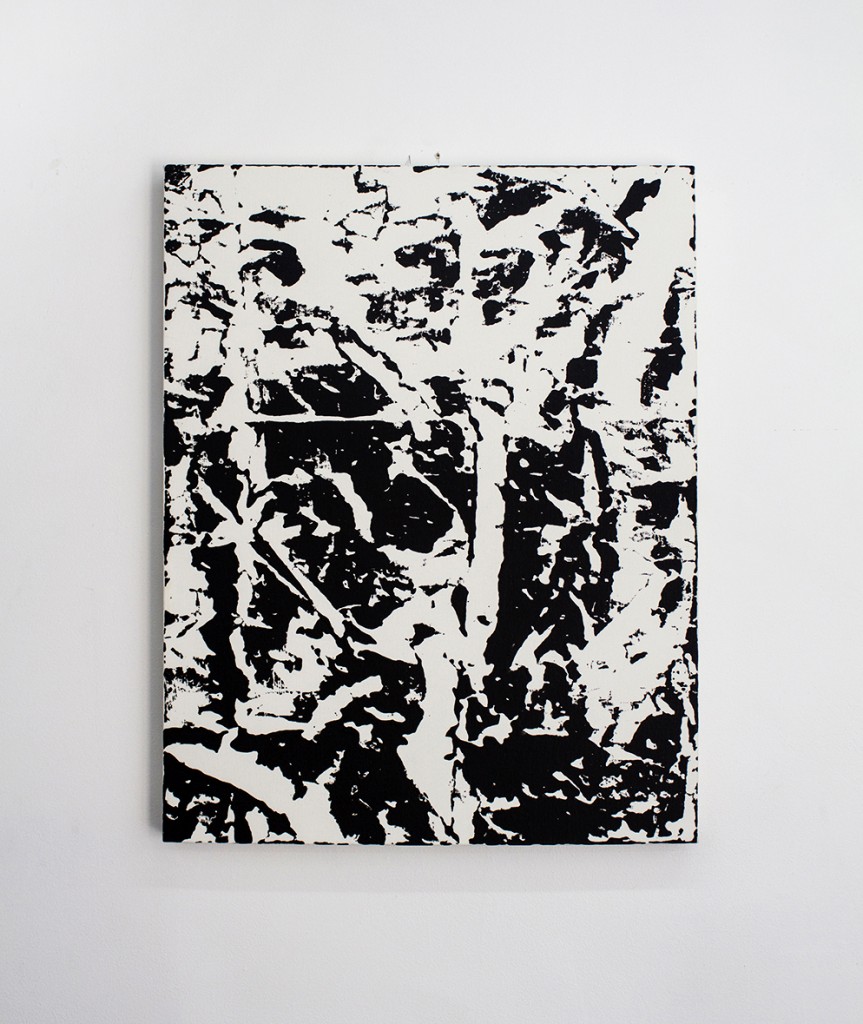 April 2014 – Florian Meisenberg
April 2014 – Florian Meisenberg
May 2014 – Steven Cox
“During this time of studying curating, I painted a lot in my flat, a few disasters happened along the way. I specifically remember renting a really expensive flat in a nice area of Edinburgh though completely destroyed the carpet by leaving a bad trail of oil paint. Somehow, I managed to cover it up by using cream coloured spray paint and oddly I got away with it. Though, at that point, I realized a serious studio was required so my work could be explored further. “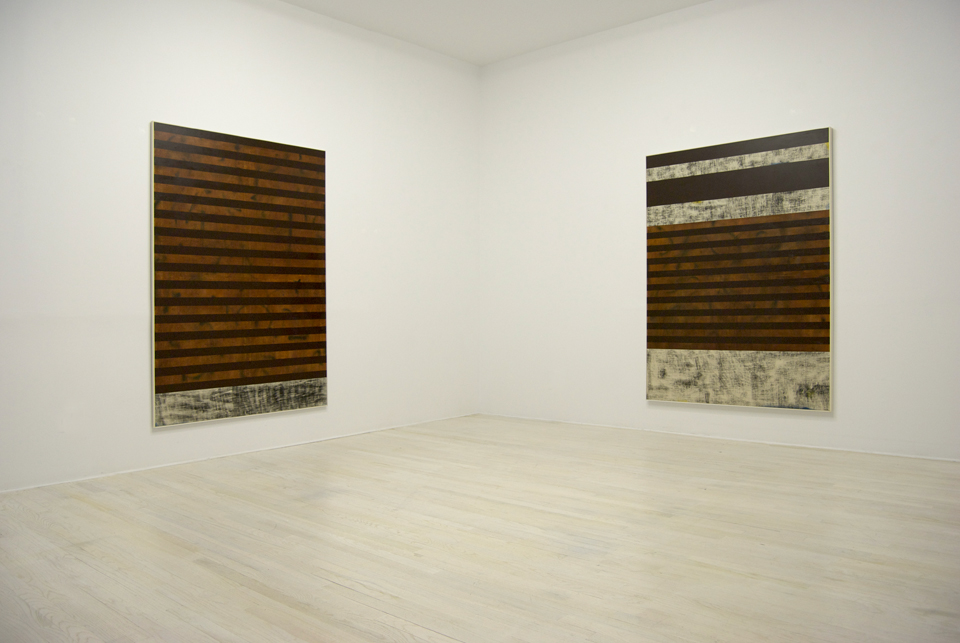
A feverish unfolding of reds, magentas, carmines, blacks, crimsons, violets, plums, greys, burgundies, pinks, whites, browns. Some golden dust.
They show all the bewilderment of fullness. The continuous crossing of a full and intense glimmer. Facing the Pale is like dipping one’s head in a blooming cherry tree.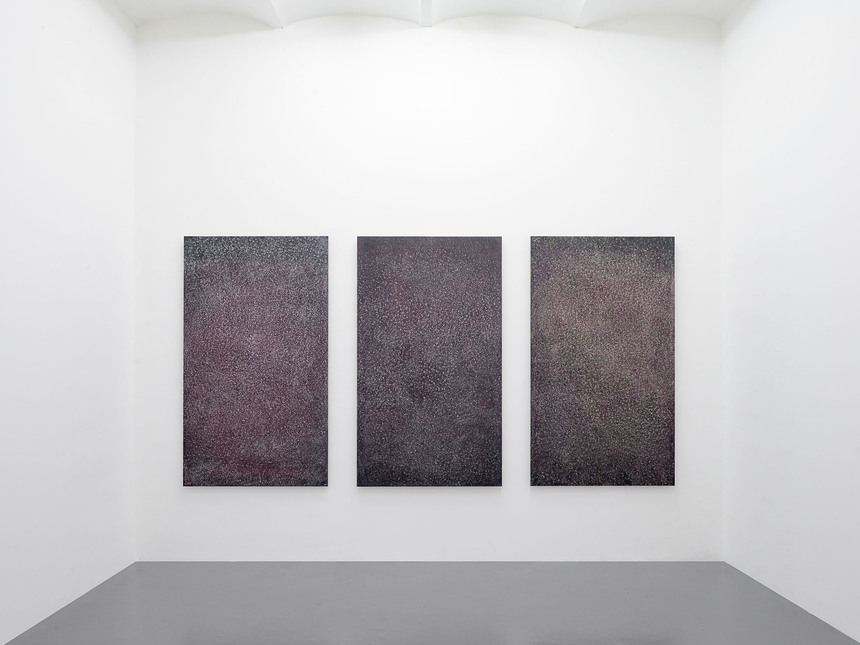
May 2014 – Alex Da Corte
The idea / concept behind your art – Can you tell me more about it ?
The work and the words ascribed to my work are always shifting and morphing.
Id like to think that the work points to those divisions and shifts in perception, the residue of experience, the inability to translate or articulate, and proposes new ideas for how objects and people can coexist- or not…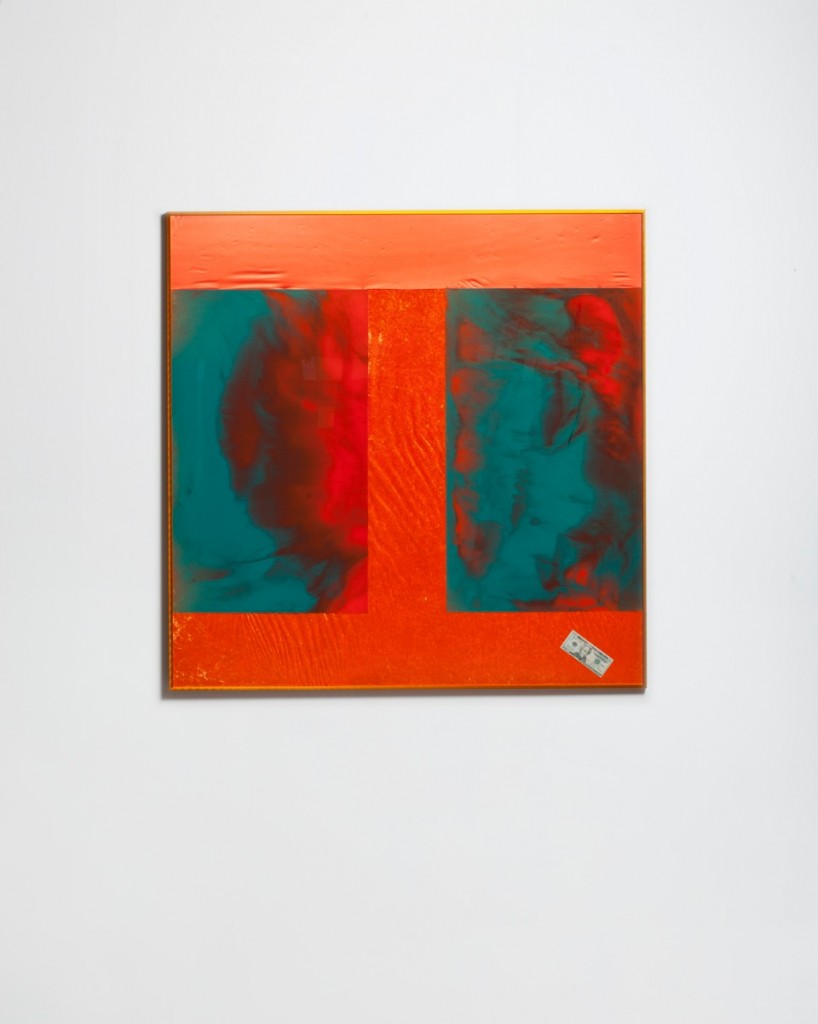
June 2014 – Dean Levin
To create these paintings Levin makes tile “samples” by taking certain rectangular segments of linoleum tiles, into which he rubs oil pigments. After this, he dips a length of canvas in turpentine and places it over the tiles. The turpentine breaks down the pigment and stains the canvas. During this process, the grid of the tiles in the “sample” is also imprinted onto the canvas. The result is a length of monochrome canvas that contains the vagaries of the surface of the studio floor.
The first artwork I ever made was to ask the artist Sophie Calle, who was my deepest obsession at that time, to tattoo her signature on my skin.
Then I asked a psychologist to help me get out of my Sophie Calle obsession. He then suggested I choose another woman in the art world and live with her.
I went to Alaska to stay with Paola Pivi helping her build a new house.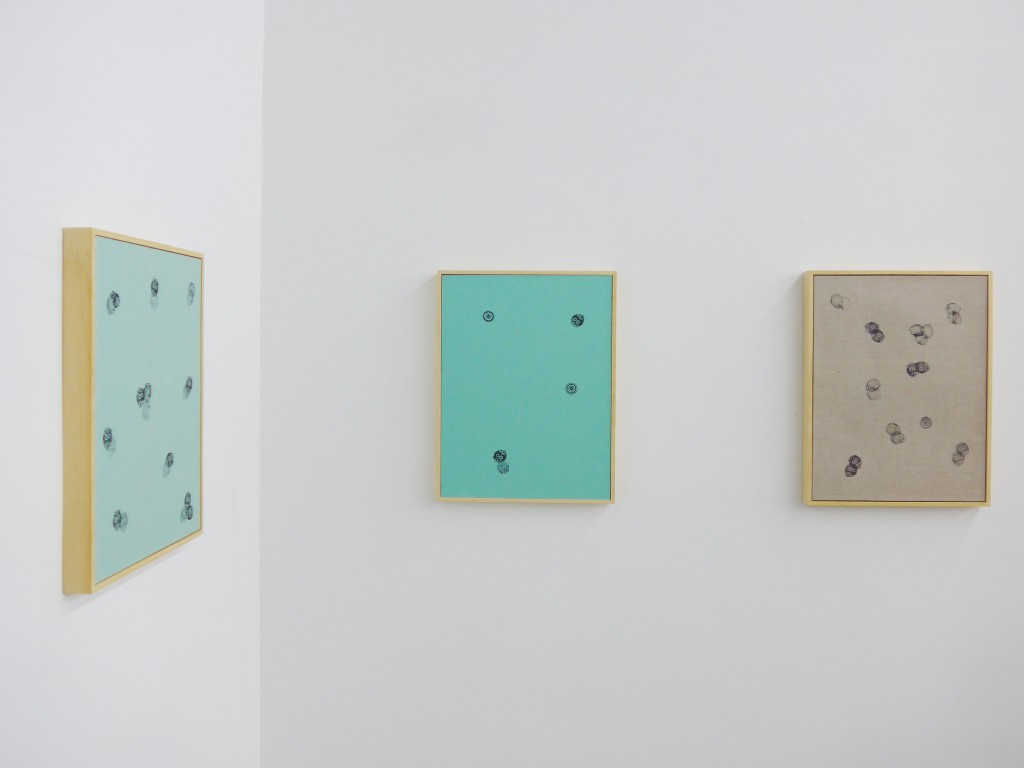
Ryan Estep – Solo Show June 2014
Dirt is taken, mixed with an organic disinfectant and heated to 600 degrees. This sterile material is then silkscreened onto canvas and re-stretched while wet.
With a systematic set of rules and premeditated actions, Estep follows a ritual of sorts, starting with the creation of a monochromatic surface in the tradition of post-minimalism, and finishing the process with the addition of gestural marks. The marks are usually the result of an intentional accident, following an action planned by the artist and at times affected by his experimentation with unconventional materials.
While Giorgio Griffa´s work has been overlooked for several decades, Griffa exhibited at Sonnabend gallery in New York in 1970 and participated in important international exhibitions such as Prospekt, Dusseldorf (1969 and 1974) and the Venice Biennale (1978 and 1980).
“I’m interested in the relationships between materials – Building up, breaking down, yielding, consenting, push back, loss and gain. That intertwines process and materiality, looking for moments of shift. So yes, it looks at a things relative ability or inability to transform, but my end goal isn’t to free it from being a static object. Many ideas lead to a static state through change, and that’s just as interesting. “
July 2014 – Peppi Bottrop
What is more important to you regarding your work: the process. the visual outcome, the material – or something else?
– All of it. At first I think about the material. It is the first reference to the emerging image. After that it is important to me to completely lose myself in the process up to the point where I exit the image. A stroke is a stroke. What you see is what you get.
July 2014 – Alberto Tadiello
The new body of works, the sand paper. I would love to know more about them.
Have you ever seen a blooming cherry tree? Have you ever dip your head inside its flowering? Did you ever look at a flower meadow from the ground level? Think of something feverish, vivid. Of a sanguineous temperament. Of incandescence. Of metal substances’ colours, becoming increasingly bright and hellish at elevated temperatures
August 2014 – Andre Butzer
What is more important to you regarding your work: The process. The final visual outcome. The material? Or something else?
IMPORTANT IS ONLY THE IMAGE. THERE IS NO PROCESS OR PROGRESS. THERE IS ONLY ENTITY, ESSENCE, DESTRUCTION, ENDLESS ANNIHILATION AND LOVE.
The works on canvas that are folded, Can you tell us more about them and the process.
– I think the folds relate to our relationship with the physical world. each visible segment of material overlaps a concealed equal portion, creating a rhythm of not only line and space, but also of visible and invisible.
September 2014 – Tove Storch
The shadow works where dealing with ideas of how to change two-dimensional material into three-dimentional objects. The steel-constructions with silk stretched on or within them somehow still deals with that thought, because the steel has the role of making construction points that something else can attatch itself to, to become volumous in space. I dont think it was a dicision to go in a certain direction, one works leads to the next and I slowly change my subject.
The ‘original’ painting is always something I made, usually some sort of gestural abstraction. It’s a direct and very free painting, and something that assumes a certain relationship about mark making and gesture, and embodies a certain kind of belief about art and art making. The original painting is taken and objectified, and acted upon and treated as a symbolic token in a larger ritual. This all evolved very slowly and methodically, albeit intuitively, out of a desire to challenge the way I made art, and to put pressure on my assumptions and beliefs about painting.
As a painter my materials are somewhat basic. I like to work within the confines of traditional mediums. I also work in a reduced palette. Limitations like these influence my decision-making and lead me to be more focused in my approach to the work. The process is very important in the creation of the work but does not supersede the final visual outcome. I work reductively, sanding off layers of paint in thin strips, slowly breaking down the image’s recognizable features. This process is crucial to the establishment of the very ideas behind the work but is not completely pre-determined. It’s important that the final product be something that teeters between representation and abstraction, where the subject is obscured but never completely lost. In the end the final visual outcome is the most important and all of the other elements are in service to the painting itself.
October 2014 – Anja Schwoerer
The textiles used are the basis of the various bodies of work. When I discover a new textile, I explore the way it reacts to being bleached, how it absorbs (or not) the dyes, the nature of it’s woven structure etc. Thus, the material influences the look of the finished work. I often get ideas through experimenting with the physical properties of the various textiles. The different, often contrary and complex, steps in this process are decisive for my work.
Q: The process of your paintings the repeated screen prints, can you tell us more about it?
A: The ink going through the screen becomes the image. I ‘m only the painter who talks with the image, I learn its language thanks to my translater : silkscreen. As repetitions proceed and the different appearances of the image, the image and I, we paint together.
Q: What is more important to you: The Process. The final visual outcome. The material? Or something else?
A: There is no ranking as such, one inspires and leads to the other. I would say the visual outcome is less important as a lot of my work happens organically and there is a lot of chance involved. Lately I’ve made more work that is far more composed. These also start as off cuts and get reconfigured into new works. Some of the materials I use are 100+ years old linen and hemp. These do whatever they want depending on the weave, ageing, stains, fibre damage etc.
November 2014 – Samuel Levi Jones
Q: What is most important to you regarding your work? The visual outcome, The process, The Material, Or something else?
Interesting question. I feel that each of these things is no less important than the other. The “something else” for me would be the conceptual entity of the work. The term “process” seems to be used primarily for the act making. To me process is everything from getting up in the morning to turning down at night. Sometimes the process is even continued in rest. I am actually able to remember my dreams or even nightmares in the morning then they also become part of process. Part of the outcome is how the viewer, through the work, experiences the idea or ideas. The experience of the viewer is equally as important, so from beginning to end everything has to take equal importance.
December 2014 – Steve Nishimoto
Q: The process and the choice of source material and ideas surrounding your work, can you tell us more about it?
A: My most recent series of paintings is titled ‘Cessation,’ which refers to the “act of bringing to an end” or in terms of smoking cessation, quitting. I acted on my fixation with both smoking and quitting smoking to create these works. The viewer may perceive the fragility of life in the materials and treatment. Tobacco staining, burnt matches and ashes are littered across raw canvas. I try to use inexpensive, readily available materials—which may have a negative connotation about them—to hopefully create compelling artworks
